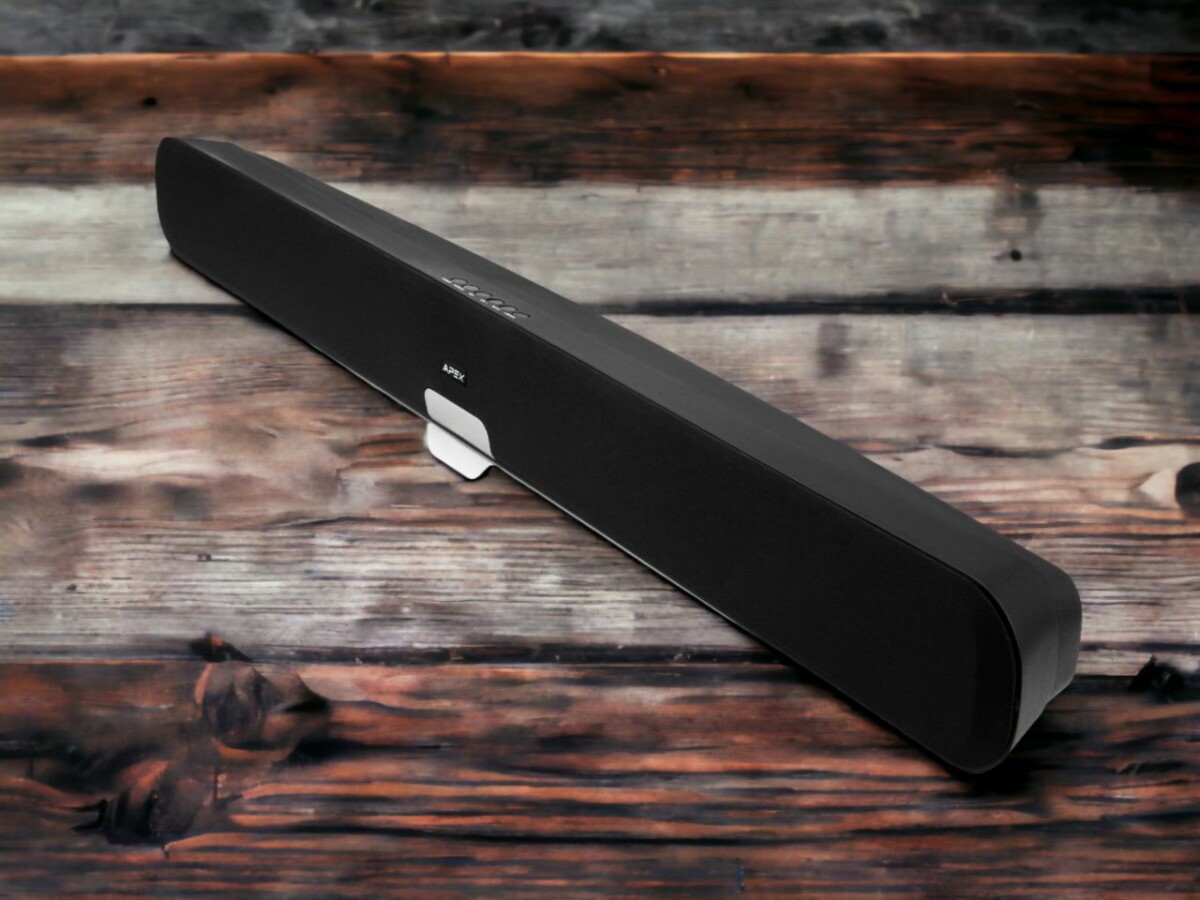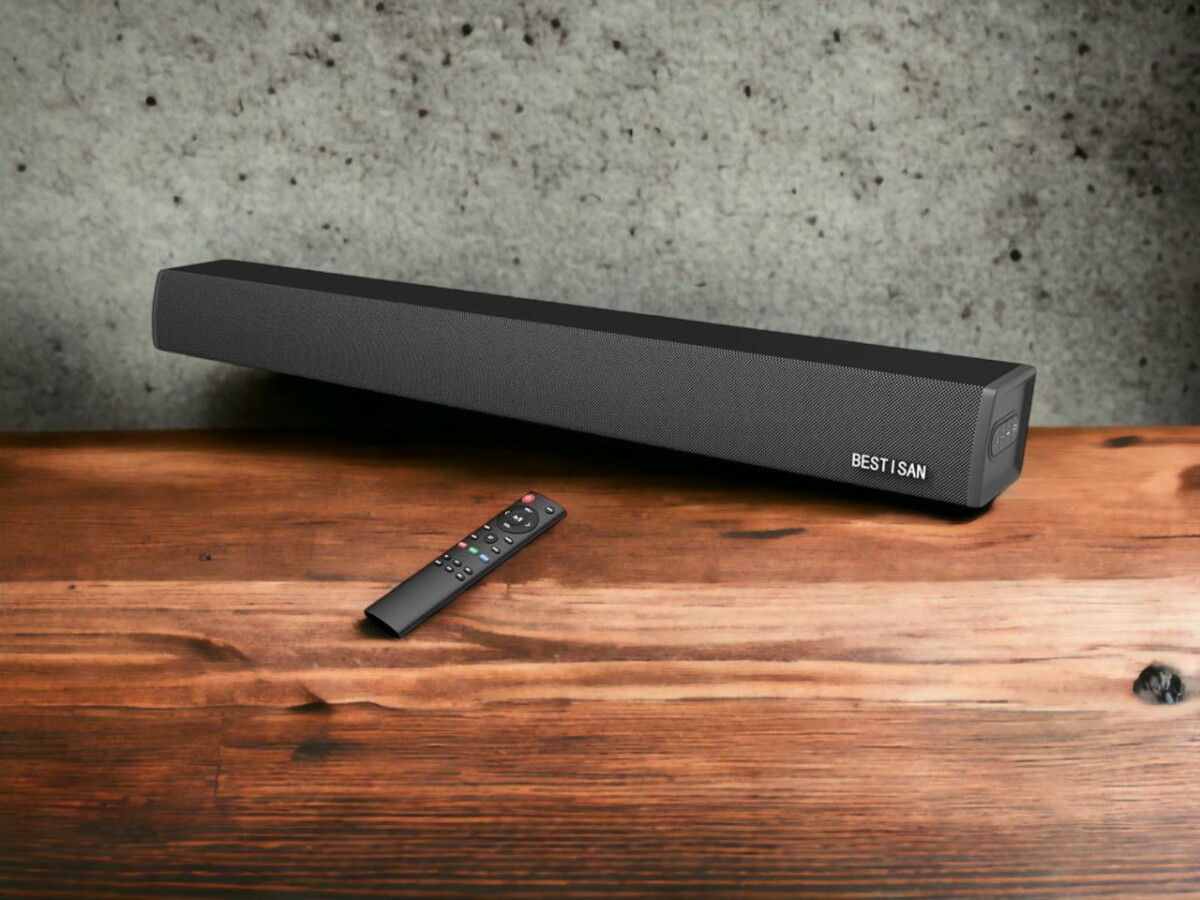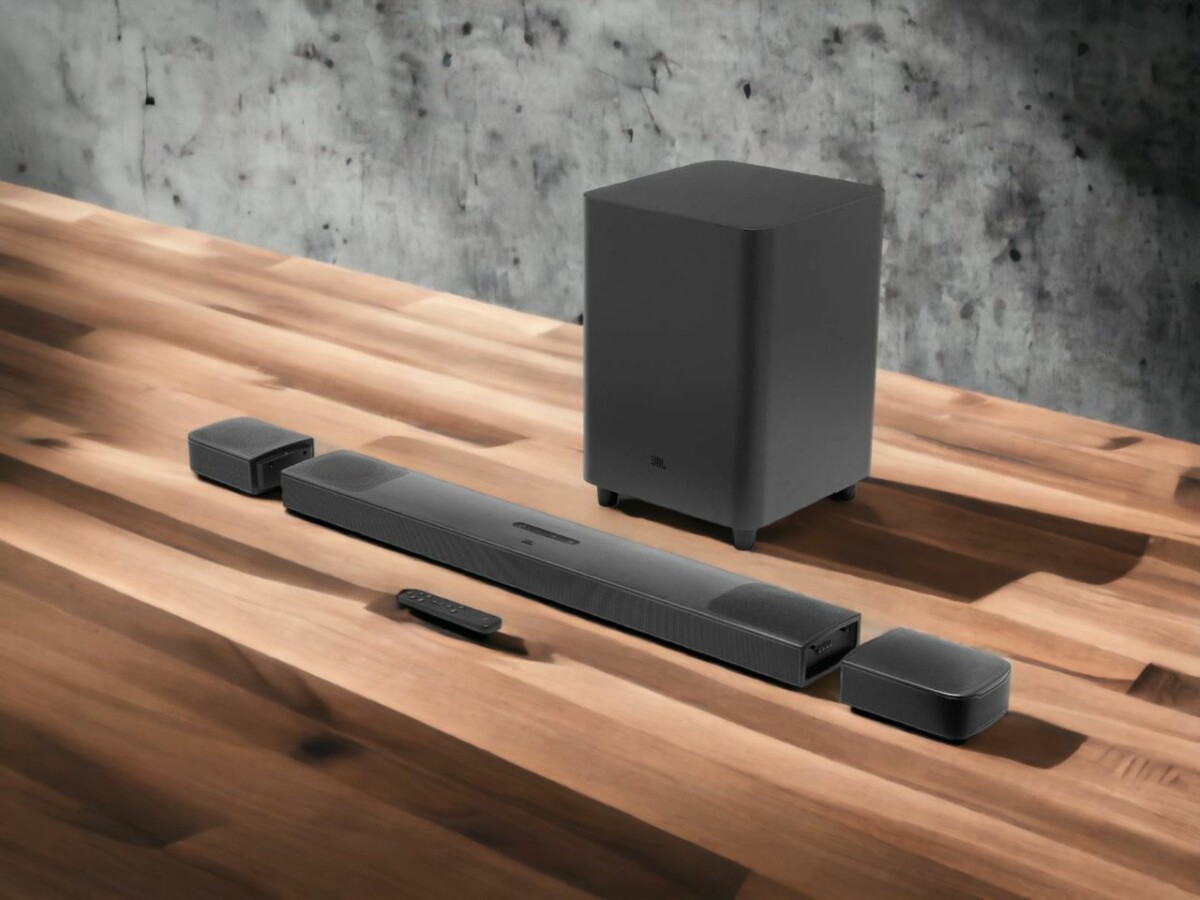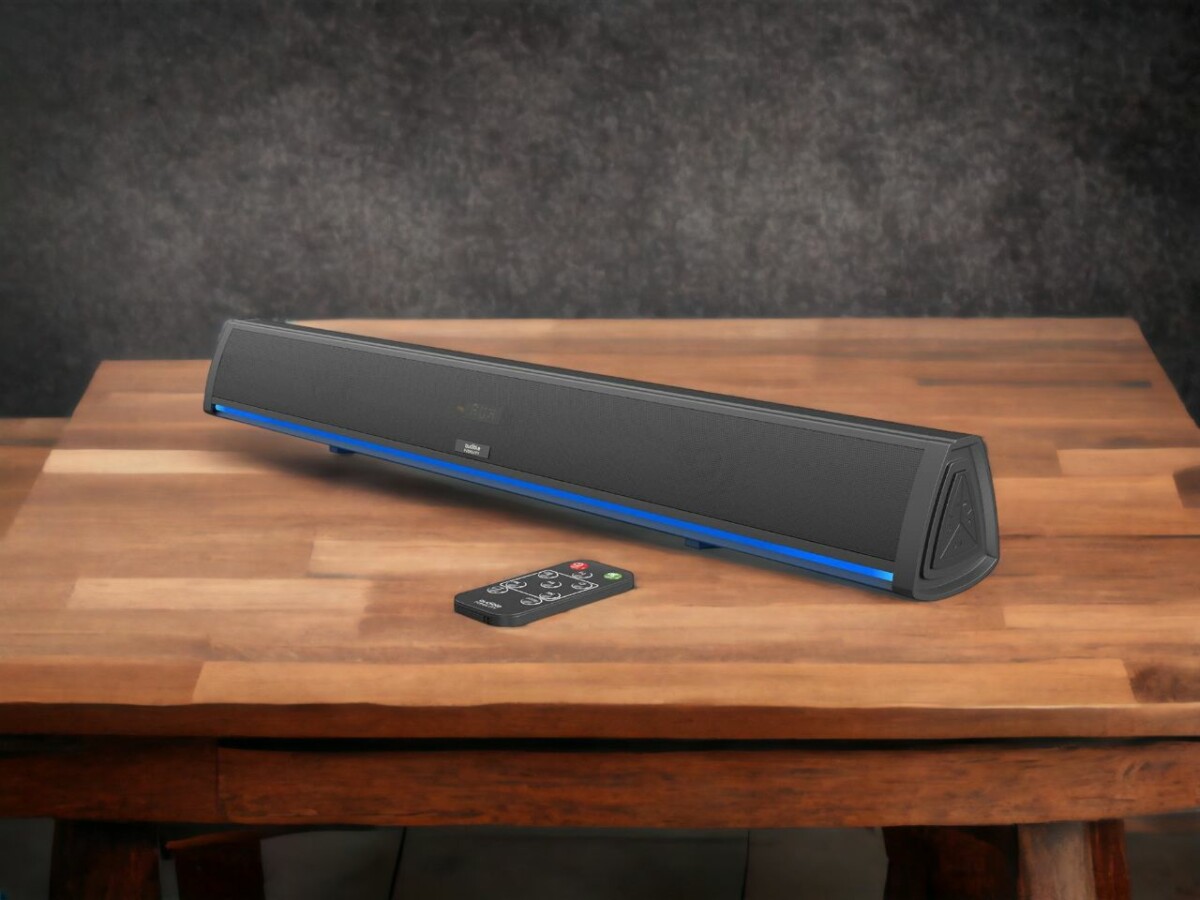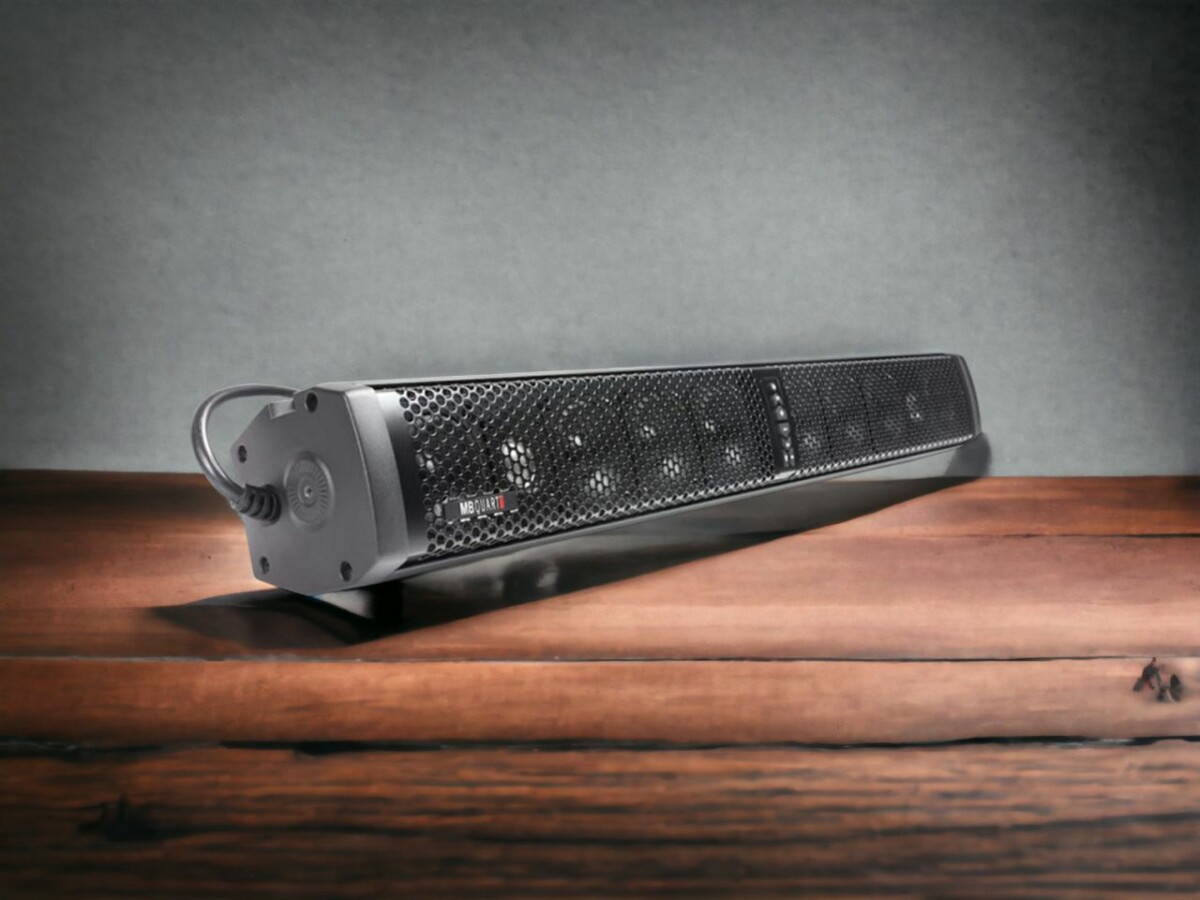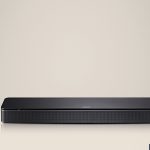Picture this: you’re cooking up a storm of sound in your living room. You’re on the hunt for that perfect balance between crisp, clear conversation and the kind of bass that shakes your whole house.
It’s the ultimate face-off: soundbar vs subwoofer. No stress, we’ve got your back! We’re going to break down their main features, stack up their sound quality, and arm you with the info you need to make the right call.
So, let’s dial in and crank your home audio game up a notch!
How does a soundbar stand against a subwoofer?
A soundbar functions as an integrated speaker system designed to uplift the audio of your TV. In contrast, a subwoofer’s role is to amplify bass. Often, soundbars are equipped with subwoofers to afford a more wholesome range of sound.
Before you can confidently choose between a soundbar and a subwoofer, you need to have a grip on what each of these audio devices brings to the table. Let’s start with the soundbar.
Picture this: a slim, stylish gadget that seriously boosts your TV’s sound. Not only does it look good, but it’s also super simple to set up and takes care of all your audio needs in one go.
Now, onto the subwoofer. This isn’t just any old speaker. It’s designed specifically to crank out those low-frequency sounds that add depth and richness to your audio experience. However, getting the best out of a subwoofer isn’t just about plugging it in and blasting the volume. You’ll want to think about where you’re placing it. Close to the wall or in a corner can seriously up the bass.
Another thing to consider is the subwoofer’s crossover frequency. This is the point where the subwoofer starts picking up the bass notes, making sure it vibes perfectly with your other speakers.
Key Features of a Soundbar
Ready to dive into the world of soundbars? Let’s go! We’re talking about some seriously important features here, ones that can totally make or break your home audio game.
First off, sound quality – it’s gotta be top-notch, right? No one wants to host a movie night with subpar sound.
Next up, let’s chat about connectivity options. You need a bunch, ’cause who knows what device you’ll want to hook up next? Maybe it’s your new gaming console or your old-school vinyl player. The point is, the more the merrier when it comes to connections.
And lastly, don’t overlook size and design. You wouldn’t buy a couch that doesn’t fit in your living room, would you? The same goes for your soundbar. It needs to complement your space, not dominate it.
Sound Quality
When we’re talking about the main things that make a soundbar rock, the quality of sound takes the cake. It’s like the top dog, the big cheese, the main squeeze. It’s crucial. Dial in the right soundbar, and boom! You’re smack dab in the middle of a home cinema audio experience that will blow your mind.
So, what’re the deets you need to look at? Let’s rap about it:
- Where you park the subwoofer: This is big time. Where you put it can crank up or tone down the bass vibes. Tucking it in a corner usually makes the bass hit harder.
- The vibe of your room: This shapes the whole sound. Think about the size, shape and how you’ve set up your furniture.
- Tuning your subwoofer: This is about finding that sweet spot with the crossover frequency. It’ll make the handoff between the soundbar and subwoofer as smooth as butter.
- The volume level: Dial it in to vibe with the soundbar for a balanced sound.
Keep in mind, sound quality isn’t just about cranking up the volume. It’s about the fullness, the clarity, and the depth of the sound. It’s the difference between hearing a song and really feeling it.
Connectivity Options
Alright, so when it comes to hooking up your soundbar, there’s a couple of main routes you can take: wired or wireless – both with their own unique ups and downs.
Going down the wired route means using an HDMI or optical cable for a rock-solid, reliable audio connection. But be warned, this could put a damper on how creative you get with your setup and might lead to a wire-jungle situation.
Now, the wireless route is the opposite – it gives you total freedom to play around with where you place your soundbar, without the headache of tangled cables. A lot of soundbars come with Bluetooth built-in, so you can easily pump tunes straight from your device, adding a touch of convenience to your audio game. Sure, wireless can occasionally have some signal hiccups, but tech has come such a long way that this is becoming less of an issue.
Size and Design
When you’re on the hunt for the perfect soundbar, there are a couple of key things to keep in mind. First off, you gotta think about size and design. They’re not just about how good it’ll look in your room, but they can seriously affect the sound quality and how you set up the thing.
Let’s talk about Size first. Soundbars come in all shapes and sizes, and while a bigger one might pack a better punch in terms of sound quality, you’ve gotta be sure it’s gonna fit in your space. So, no point in getting a massive soundbar if you’re living in a shoebox, right? Make sure you measure out your space before you buy anything, to avoid any unpleasant surprises.
Next up is Design. Now, we all know that appearances matter, and a soundbar with a slick design can seriously level up the look of your room. Plus, some of them can be mounted on the wall, which not only saves space but also gives you more flexibility when deciding where to put it. And, let’s not forget about the user-friendliness factor. A soundbar with easy-to-use controls and ports is a total game-changer.
Key Features of a Subwoofer
We’re about to dive headfirst into the world of subwoofers and really get into what makes them an essential part of any legit sound system. First things first, where you put your subwoofer can make or break your sound quality. It’s all about boosting that bass, so the pros recommend tucking your subwoofer into a corner or up against a wall.
Alright, let’s get into the different types of subwoofers. There are two main dudes on the block: passive and active. Passive subs need an external amplifier to do their thing, while active subs come with their own built-in amp. Which one you go for really just depends on what you’re looking for in your sound.
Just remember, the right subwoofer can take your sound from good to great, giving you that deep, immersive audio experience you’re after.
Comparing Sound Quality: Soundbar Vs Subwoofer
Let’s jump right into the nitty-gritty of sound quality, pitting soundbars against subwoofers. This way, you’ll get a solid idea of which one’s going to serve up that audio goodness you’re craving.
Starting with soundbars, they’re the ultimate blend of style and performance. If your TV speakers aren’t cutting it, soundbars are a fantastic way to level up. They’re all about delivering a well-rounded sound spectrum, but let’s keep it real – their bass might fall a bit short, especially if you’ve got a larger space to fill.
On to subwoofers, these bad boys are all about that bass, no treble! If you’re all about those deep, earth-shaking lows, a subwoofer will make every movie explosion and music beat feel like you’re living it. But remember, where you place your subwoofer is key. Tuck it away, or let it steal the show – your call. Just know that its spot can make or break your bass experience.
At the end of the day, it’s your call. It’s all about what you personally dig and the kind of audio vibes you’re chasing.
Making the Choice: Factors to Consider
So, you’re stuck in the middle of the soundbar vs subwoofer debate, huh? Let’s break it down.
First things first, your budget. It’s no secret that soundbars are usually easier on the wallet. But don’t jump the gun just yet. It’s not all about the price tag. It’s about the vibes, the quality of sound you’re after. If you’re all about that deep, soul-shaking bass, shelling out a bit more for a subwoofer might just be your jam.
Next up, think about the setup. Soundbars are pretty much a breeze, just plug in and you’re good to go. But a subwoofer might need a little more tech-savvy touch. It’s really about what floats your boat. Are you after the simplicity of a quick setup or chasing that immersive, movie-theatre-like sound experience? It’s your call.
Using Soundbar and Subwoofer Together: The Best of Both Worlds
So, you’re ready to take your sound game to the next level, huh? Well, splashing out on a soundbar and subwoofer combo could be just what you need. It’s like hitting two birds with one stone – you get the simplicity of operation and that deep, rumbling sound that sends chills down your spine.
This duo can transform your audio encounters, making your tunes or movie marathons nothing short of epic. But, there are a couple of things you gotta keep in mind: where you stick your subwoofer and whether your soundbar and subwoofer are even on speaking terms.
First up, Subwoofer Placement. Where you park your subwoofer can shake up the sound quality big time.
- Wedging it in the corner? That’s like cranking up the bass to 11, delivering a powerful, thunderous sound.
- Lining it up with the soundbar? This might give you a more harmonious, well-rounded sound.
Next, Soundbar Compatibility. Not every soundbar and subwoofer are BFFs.
- Check out the brand: Some brands craft their kit to play nice together.
- Go for universal compatibility: Some subwoofers are like social butterflies; they’ll work with any soundbar, giving you a wider range of options.
Just remember, the right soundbar and subwoofer combo can seriously amp up your audio experience. So, play your cards right and you’ll be well on your way to sound heaven.
Sound Artist
I’m a Sound Artist creating immersive sonic experiences. I turn everyday objects into music, turning the mundane into something marvellous!


